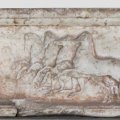Zoology and Entomology Department lecturer Dr Ian Owens is a real high-flier.
His work is testing and challenging aspects of evolutionary theory put in the "too-hard basket" by generations of researchers before him.
Using technologies belonging to the last decade of this century, he is investigating the "genes versus environment" debate dating back to Darwin.
He said the University of Queensland Foundation Research Excellence Awards represented a "quantum leap" in strategic research funding for young researchers and were at a "high level enabling meaningful research to be completed in a relatively short space of time."
Dr Owens said his $50,000 grant would enable him and research assistant Susan Scott to test new immunological methods on birds both in the wild and under laboratory conditions.
"We will test whether individual birds who respond well to artificial immunocompetence tests are also the ones who manage and survive diseases in the wild," he said.
"Darwinian theory of disease evolution is based on the idea that populations evolve to resist disease but until now, the technology has not been available to rest this on hard, empirical evidence."
Experiments will be conducted this summer on Heron Island and at the St Lucia campus.
"The research award has provided me with a valuable opportunity to get into a very exciting new research field otherwise difficult to break into with external funds alone. By early next year, I will have enough data and research papers to support applications from other funding sources," Dr Owens said.
In another research project completed earlier this year and published in the prestigious scientific journal Nature, Dr Owens found that sexual atrractiveness in sparrows was more about environmental rather than genetic factors, in particular how protective "surrogate" fathers were of young males.
In 1992, Dr Owens and senior research fellow from the Institute of Zoology in London Dr Peter Bennett, began compiling what is believed to be the largest and most detailed biological database of the world's 9500 known bird species.
The computer model can also be used to identify and predict the world's most
endangered birds, guiding conservation groups in selecting species for protection.
Dr Owens obtained his PhD from the University of Leicester in 1991. His thesis on sex roles and sexual selection represented one of the first applications of DNA fingerprinting to the mating system of wild animals, in this case the Eurasian dotterel.
He joined the University of Queensland as a lecturer in ecology in 1995.
His high level research has been recognised through a string of prizes and awards including the Zoology Prize from the University of Liverpool in 1988, a British Museum of Natural History Award Scholarship in 1989, a Society for the Study of Animal Behaviour Award in 1991, the British Ecological Society Award in 1992 and the European Science Foundation Award in 1998.
Since arriving at the University of Queensland, Dr Owens' research has attracted $337,000 in external funding mainly from the Australian Research Council large and small grants schemes.
He has had 28 papers published in refereed journals, as book chapters and conference proceedings including one Nature article and 10 articles in the Proceedings of The Royal Society of London, Series B.
.jpg)



